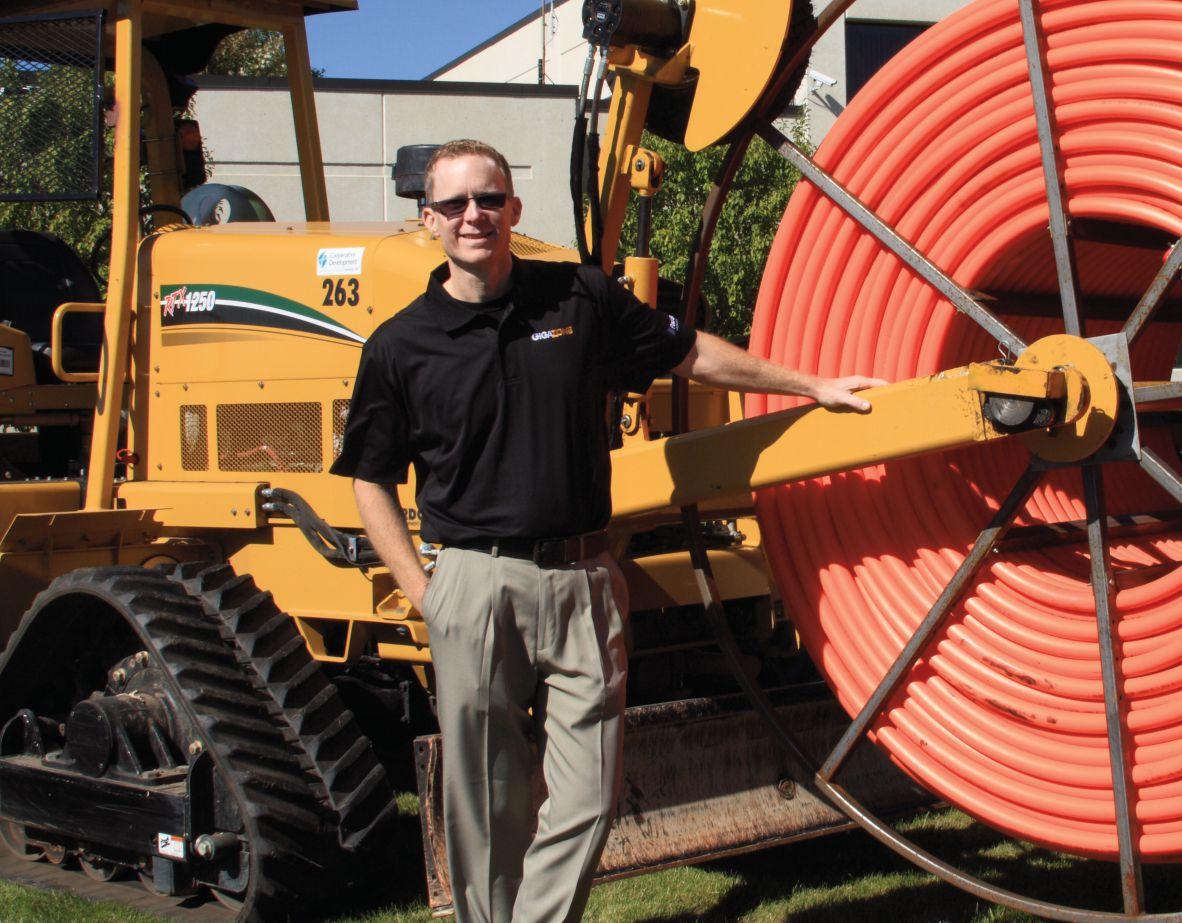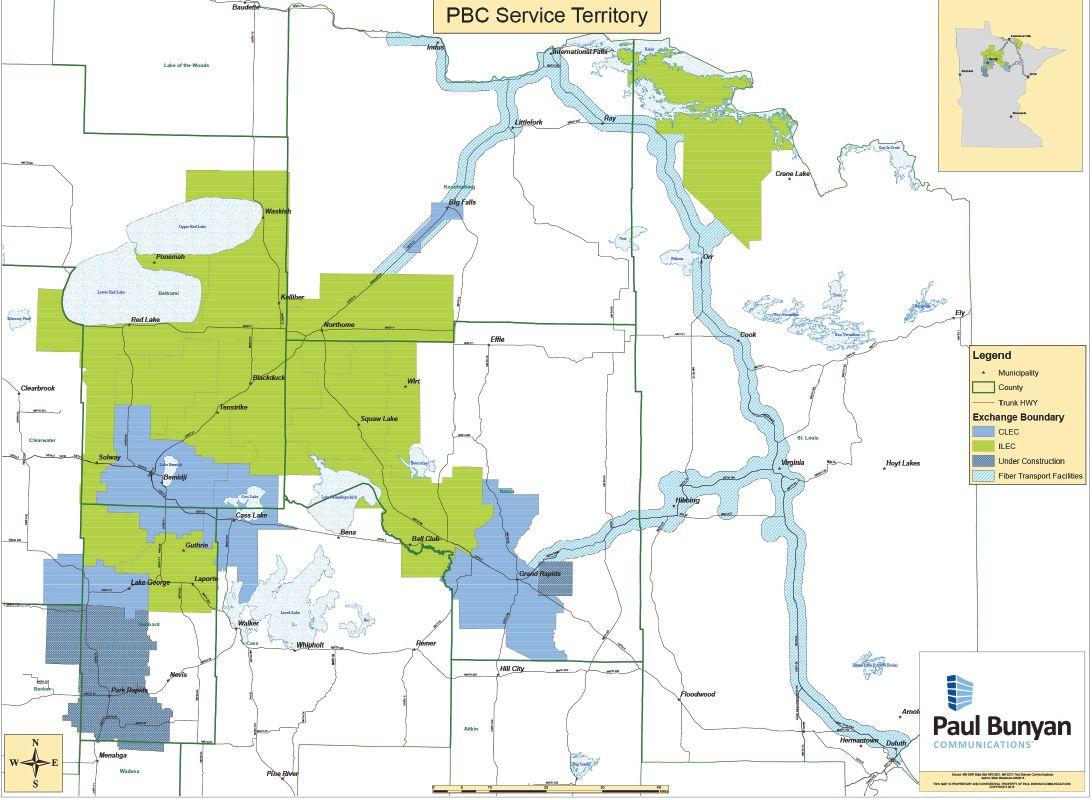
3 minute read
Getting in the GigaZone
BY KRIS BEVILL
Bemidji, Minn.-based Paul Bunyan Communications is living up to the size of its mythological namesake. The telecommunications cooperative announced in September plans to provide gigabit (1,000 megabits per second [Mbps]) broadband Internet speed to customers throughout a 5,000square-mile area of northwest Minnesota beginning early next year. When complete, the so-called GigaZone will be one of the largest rural fiber networks anywhere in the country
“We’ve always been committed to giving our region the best possible communication services,” Gary Johnson, Paul Bunyan Communications CEO and general manager, says “When we were formed 63 years ago that meant quality telephone services to areas no other provider would serve Today it means delivering advanced data services and Internet capabilities to our members unsurpassed by any region or any other provider in the country regardless of size or location ”
Give me Giga
Communities and tech-savvy businesses throughout the country have been clamoring for high-speed fiber networks as data demands increase for both consumers and commerce One gigabit is the current Holy Grail of broadband speeds, enabling users to download and upload movies, photos and other data in just seconds (A 50 Mbps connection, which is currently the fastest broadband speed available in most areas, takes several minutes to complete those tasks.) Google Fiber, the Internet giant’s pilot project to deliver gigabit fiber to selected communities beginning with Kansas City, Mo , is probably the best-known gigabit fiber project in the nation, but similar projects have popped up around the country, including elsewhere in our region. The Dakota Fiber Initiative, launched in Fargo in 2013 by techpreneur and investor Doug Burgum, challenged the state of North Dakota to become the most connected state in the nation That initiative and others have moved somewhat slowly, however, as telecommunications providers cite the cost and time required to install high-speed broadband as being prohibitive in the face of uncertain demand for the final product
Paul Bunyan, however, held true to its mantra of providing the best technology available and began laying the groundwork for its massive fiber network years ago The cooperative delivered its first fiber-to-the-home service a decade ago and has already invested $150 million in its fiber network

“We’ve been quietly but aggressively doing this for a long time,” Johnson says.
An additional $25 million is expected to be invested over the next three to four years as Paul Bunyan builds out its GigaZone, beginning in Bemidji early next year and expanding outward into the surrounding region. Residential and business customers within the zone will have the option of choosing from broadband speeds ranging from 250 Mbps to the coveted 1 gigabit per second, and while Johnson admits it’s difficult to predict how many will immediately sign up for gigabit speed, he expects it will become increasingly popular as broadband demands continue to grow in coming years
Bob Fitzgerald, director of operations at Kraus Anderson’s Bemidji office, says his office currently has 50 Mbps broadband and intends to upgrade to gigabit speed as soon as it’s available. “Faster Internet capabilities will allow our team to process, upload and download information at a much faster rate than is currently possible, thus saving time And today, more than any other period in our society, time is money, ” he says.
In his comments delivered during an event at Paul Bunyan headquarters to unveil the GigaZone, Bemidji State University President Richard Hanson commended the company for “driving a stake into the future” of Bemidji High-speed Internet access will allow BSU the capacity to continuing expanding its online courses, the opportunity to collaborate with others and the ability to more easily recruit newcomers to the community, he said
About 200 of the university’s approximately 1,200 courses are currently offered online, but it expects to increase its online/distance education offerings in the future as demand increases from both off-campus and on-campus students.
Economic Development Tool
The GigaZone is also expected to become a huge recruitment tool for economic developers in the region. Dave Hengel, executive director of Greater Bemidji, told attendees of Paul Bunyan’s GigaZone unveiling that every prospective new business he meets with asks about high-speed broadband availability
“There is no doubt we have that now, ” he said. “I’m looking forward to sharing this with every company I know throughout the state and nation.”
Hengel says the definition of economic development and what it means to be a prosperous community has changed dramatically in the last decade, largely because of technology, and the GigaZone offers Bemidji the opportunity to thrive “Because of technology, companies and talent can locate virtually anywhere, so the central question for us is this: Why Bemidji? The GigaZone is clearly central to my response now, ” he says. “Why Bemidji? Because we happen to have the best fiber optic network of any region in the nation ” PB

Kris Bevill Editor, Prairie Business 701-306-8561, kbevill@prairiebizmag.com











